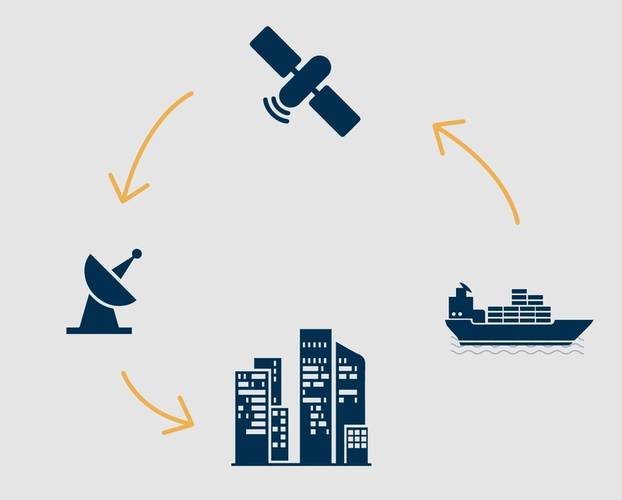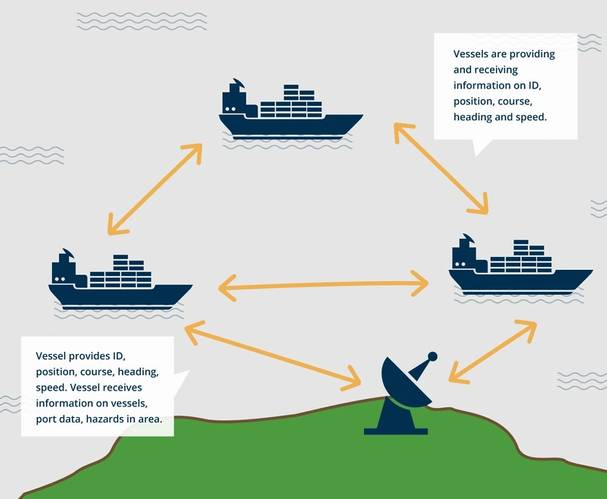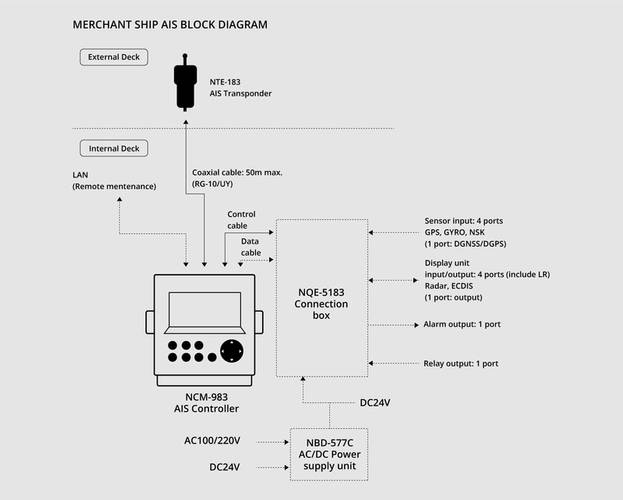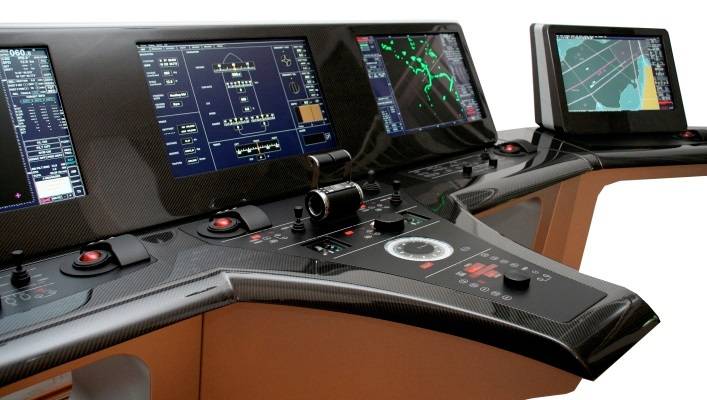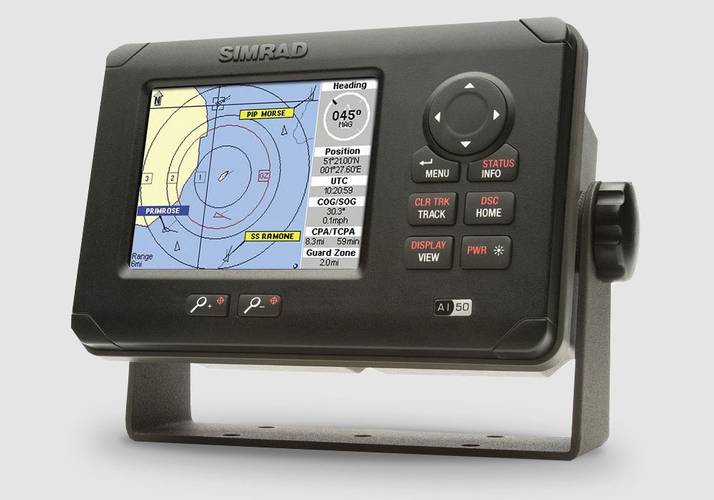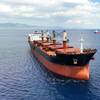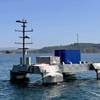The world of AIS can be confusing to newcomers and experienced professionals alike. What is AIS? What data does it gather? How can it help my business? Do I need AIS if I don’t have a business? Class A or Class B transponders? Do I actually need it? There’s a plethora of questions from those looking to get the most out of their tracking tools, or from those looking into entering the maritime industry.
The following is a comprehensive guide to AIS that covers a wide range of topics from specific AIS units to getting the most out of the data gathered. Included are some of the most commonly asked questions – and answers – regarding the topic, too.
What is AIS?
The Automatic Identification System (AIS) is a worldwide automatic positioning system based on fitting small transponders to vessels that continuously transmits a signal. This alerts other vessels and shore stations with AIS receivers to the presence of that vessel. The position information is supplemented with additional information about the vessel.
The signals and accompanying information can then be received by any vessel, land station or satellite fitted with an AIS receiver, and is then typically displayed on a screen using interactive chart-plotting software.
Terrestrial vs satellite
AIS was developed as a short range, high intensity system with a line-of-sight range of 10-20 miles between the transponders and terrestrial (shore and vessel based) receivers. Its primary purpose then as now was to allow vessels to see who else is operating in their immediate vicinity so as to prevent collisions.
What is less well known is that, thanks to improvements in technology, AIS signals can also be received by suitably equipped, low orbit, satellites. This has transformed the capability of AIS, giving it a truly global reach and allowing users of AIS services to locate and track vessels anywhere on the face of the earth from their desk or bridge.
With services like BigOceanData the data from terrestrial and satellite feeds merge with each other to give a seamless and uninterrupted service.
Who has AIS?
International maritime law requires AIS transponders to be fitted aboard international voyaging ships with a gross tonnage of 300 metric tons or more, and on all passenger ships regardless of their size. Given its visibility and safety advantages many smaller vessels also voluntarily install AIS units. In many countries no license is required to purchase and operate either transponders or receivers.
The result is that AIS is used almost universally in the worldwide commercial maritime industry and increasingly so in the leisure marine sector. Not all vessels can be tracked by AIS. Naval and security ships generally prefer not to be tracked when on active duty, and cases are regularly reported of commercial vessels underway with their transponders turned off for unspecified reasons.
A brief history of AIS
It’s not entirely clear who came up with the first AIS vessel tracking and identification system, but like so many other technologies that are often taken granted these days, it came out of the introduction of GPS for civilian purposes, which achieved global coverage in the early 1990s. It was then the integration of GPS time and position data with long-standing VHF radio technology that enabled the development of AIS.
The early years
In its early years the primary use of AIS was as a ship-to-ship anti-collision system for use in poor visibility and at night, in support of radar and conventional watch keeping. Over time the amount of information that could be transmitted in the VHF signal grew and its usefulness increased. In 2002 it finally went global when the IMO in its landmark SOLAS convention mandated that all passenger ships and other commercial vessels over 300 GT should carry Class-A AIS transceivers. At the time this affected around 100,000 ships, but since then use has expanded as the cost of transceivers has fallen and both compulsory and voluntary adoption has increased.
The final frontier
Originally developed as a short range identification and vessel tracking system, at the start of the 21st century it was discovered that AIS transmissions could be received at ranges of up to 400km above the surface of the earth, whereas on the surface the maximum effective distance is around one tenth of that. This revolutionized AIS, taking it from a coastal and ship-to-ship tracking application to a vessel management system with global coverage. However, the challenge for satellite operators looking to develop this opportunity now is managing the enormous volumes of data that this creates for individual satellites each monitoring thousands of square kilometers of ocean.
Future-proofing
The AIS format uses TDMA radio access that allows for just 4,500 timeslots per minute. One timeslot equates to a single vessel transmission. Any more than that and the individual signals start to interfere with each other, corrupting the data held within. The terrestrial AIS infrastructure with its short range and higher density does not have the same capacity problems. The satellite developers are, however, working on ways of receiving and processing incoming data at faster rates and rapid advances are being made.
An important tool in the box
There is no perfect vessel tracking system, but AIS is becoming increasingly effective as accuracy and refresh rates get ever better. Its ability to interface with other detection sources makes it an important component of integrated navigation and warning systems, and the addition of supplementary environmental and situational data makes it yet more versatile. AIS is now one of the most valuable information sources available for anyone involved in the maritime sector.
AIS in practice
There are two classes of AIS transponders: A and B. Broadly speaking, the higher specification class A is mandated for commercial vessels, while the lower specification class B is intended for smaller, mostly leisure, vessels. Capabilities and prices vary greatly between the two classes. Information from Class A units is also prioritized over that from Class B equipment.
Class A
Class A transponders are mandated under international SOLAS regulations for all international voyaging ships with a gross tonnage of 300 metric tons or more, and on all passenger ships regardless of size. They transmit continuously at 12.5 Watts and have a horizontal range of up to 40nm. They use SOTDMA (Self-Organized TDMA) technology so that each automatically adjusts its transmissions to avoid interfering with others within range. In areas with high density shipping the system also shrinks the area of coverage when necessary to ensure that the system isn’t overloaded.
Class B
Class B transponders were developed to give smaller vessels voluntary access to the benefits of the AIS system. They transmit every 30 seconds at 2 Watts and the horizontal range is line-of-sight. They use CSTDMA (Carrier Sense TDMA) technology that checks for Class A transmissions before sending its own signal. Class B information is therefore only broadcast when there is sufficient space on the AIS channel. Class B AIS capability is increasingly being included in low cost chart plotters and multifunction displays so as to overlay the information on electronic charts.
What data does AIS provide?
So now that we have explored the different types of AIS, and the history as to how it came about, let’s delve a little bit deeper into the exact type of information each class provides.
Class A
Provides three types of information:
Fixed, or static information, which is entered into the AIS on installation and need only be changed if the ship changes its name or undergoes a major conversion from one ship type to another. Includes data such as:
- MMSI (Maritime Mobile Service Identity)
- Call sign and name of vessel
- IMO Number
- Length and beam
- Type of ship
- Location of position-fixing antenna
-Dynamic information, which, apart from navigational status information, is automatically updated from the ship sensors connected to AIS. Includes:
- Ship’s position with accuracy indication and integrity status
- Position Time stamp in UTC
- Course over ground (COG)
- Speed over ground (SOG)
- Heading
- Navigational status (e.g. underway by engines, at anchor, engaged in fishing etc)
- Rate of turn (ROT)
-Voyage-related information, which might need to be manually entered and updated. Such as:
- Ship’s draught
- Hazardous cargo (type) (e.g. DG (Dangerous goods), HS (Harmful substances) or MP (Marine pollutants)
- Destination and ETA
- Route plan (waypoints) (at the discretion of the master)
Class B
Class B transponders transmit only static information every six minutes. This should include:
- MMSI (Maritime Mobile Service Identity)
- Call sign and name of vessel
- Length and beam
- Type of vessel
The original purpose of AIS was to reduce the risk of vessels colliding with each other in poor visibility.
However, the combination of satellite AIS allowing near global coverage and the ability to access AIS data online has now made it a valuable resource for anyone wishing to monitor individual or groups of vessels, different classes of vessels, or volumes of total traffic in certain areas or the whole world.
As well as ships’ officers, AIS data feeds with mapping overlays are therefore used by vessel owners and operators to monitor and manage their fleets, as well as port managers and service providers, shippers, maritime security providers, insurers, other maritime professionals, marine intelligence analysts, government agencies, economists, academics, and family and friends of crew members.
Users vary greatly in how they use the information. Many vessels owners use it simply to see where their vessels are at any given time while sitting at their desks or indeed on the beach or at home. Port managers can use the information to view incoming vessels and their latest expected times of arrival. Yachts off cruising or racing can be tracked by family and friends seeking peace of mind that all is well. On a bigger scale, academics and economists can analyze AIS data on a global scale to identify patterns and changes in trade flows and volumes, while environmentalists can use it to identify areas that might be at risk from excess marine traffic.
AIS today provides anyone who wants to see it with the most complete view available of the activity that takes place 24/7/365 on the world’s oceans, seas and inland waterways, together with a treasure trove of information on the size, type and often cargoes of the vessels themselves. Its evolution over the years from a simple collision-avoidance system is truly remarkable.
How to install AIS
Almost all Class A AIS transponders and indeed many Class B units are integral parts of integrated bridge systems or multifunction displays. However, it is worth noting that an AIS system is relatively simple in what it does and that the basic installation principles are the same for integrated and standalone transponders.
Any AIS system requires two inputs and one output to function at its most basic level. The inputs are a GPS feed, so that it can locate its position, and a VHS feed, so that it can receive incoming AIS signals from other vessels. The output is also a VHF connection, so that it can transmit its position and core vessel information. All that is needed then is power. Thereafter, additional information from onboard sensors can be fed in through a data feed as required from other systems.
The installation of even standalone units for leisure use is therefore relatively straightforward.
Frequently asked questions
Who should install AIS?
Any vessel fitted with electronic navigation equipment should have AIS so as to minimize the risk of collisions. Indeed, the smaller the boat, the more it should want to show up on the bridge displays of larger, faster vessels.
Is AIS data publicly available?
Yes, it is. There are a number of online suppliers that allow users to enter the names of vessels and find their locations overlaid on maps together with varying amounts of vessel and environmental information. The free services offer only data collected by coastal receiving stations. Offshore positions collected via satellites is inherently more expensive and services that provide this generally have to be paid for.
How does Satellite-AIS work?
Since the mid-2000s suitably equipped low earth orbit satellites have been able to pick up and decode the signals directly from the vessels themselves and re-transmit the data back to receiving earth stations connected to the internet. The coverage offered by Satellite-AIS providers is continually improving and data accuracy is already very good. However, orbit patterns and the need to download and process the data before it can be made available to service providers means that there is latency between the time of the collection of a position report and its availability via AIS services. Visit BigOceanData.com for more information.
How much does AIS cost?
As a peer-to-peer service, there are no charges when it comes to broadcasting an AIS signal. There is a cost for the equipment required to do so but prices for basic Class B transponders are now within the reach of anyone already operating even the smallest of vessels. Users should check regarding any licensing requirements within their relevant jurisdictions.
With regard to viewing the data on a screen, there are a wide number of providers that offer online services that allow users to view the vessels on a selected area of ocean. The free services provide data from terrestrial AIS receivers only and basic functionality such as tracking up to a maximum of five vessels. The more sophisticated services include satellite-AID data and a range of environmental and security overlays as well as fleet management tools.
Do I need a license?
As AIS involves the transmission of information on a VHF frequency, many jurisdictions will require a license. Generally, however, AIS will be covered by the vessels standard ship station VHF license. Users should check regarding any licensing requirements within their relevant jurisdictions when purchasing / installing AIS.
Do I need to ever update my AIS software or hardware?
Not for your transponder. You may however wish to reassess your vessel tracking service provider on a regular basis to ensure that you are receiving the best possible service for your particular needs at the most competitive price.










